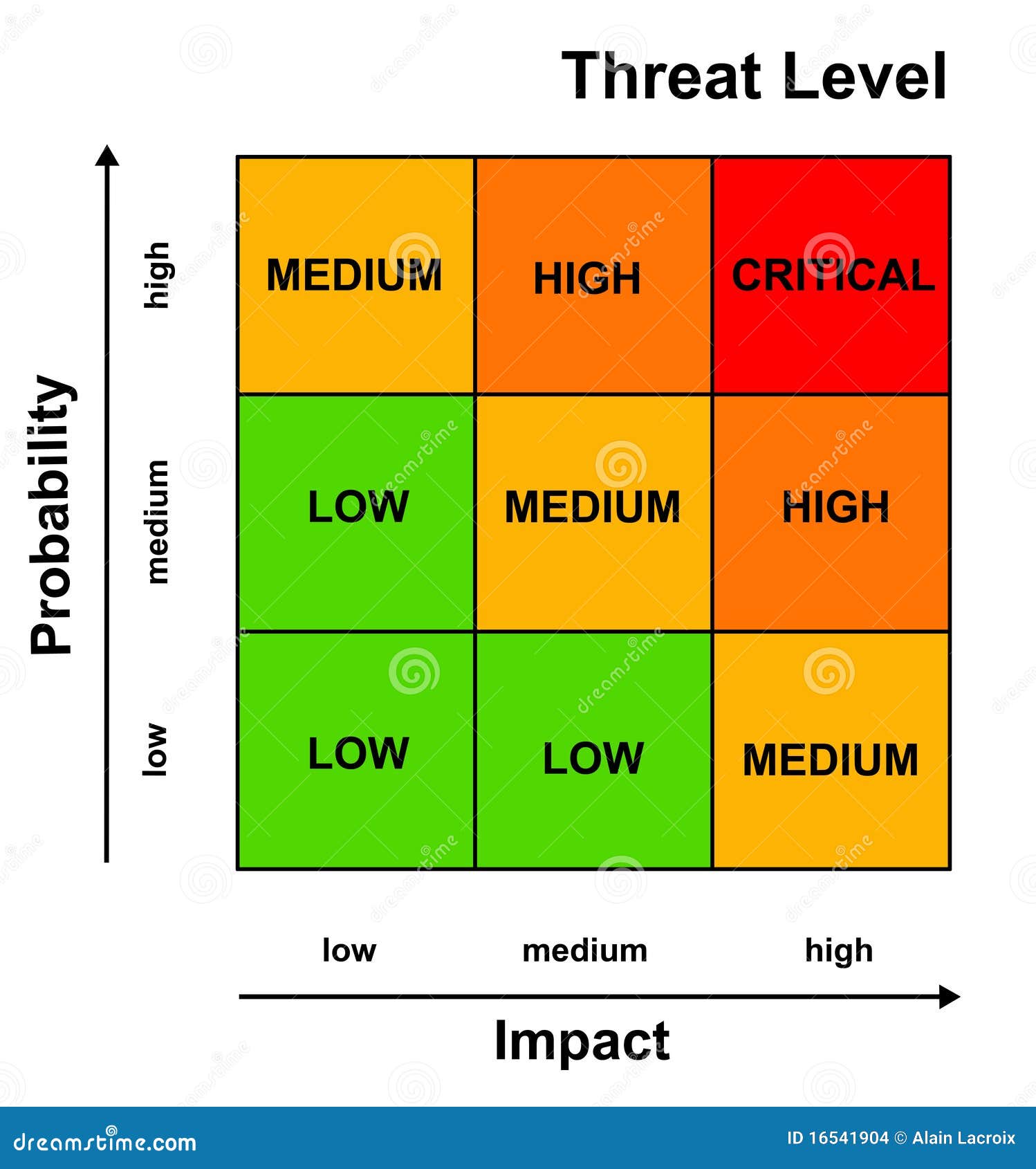
A Major Injury is one defined by the RIDDOR Regulations. This keys the element of severity to injuries reportable under RIDDOR. You may wish to use an alternative Risk Matrix, perhaps one that breaks down the elements of the risk even further.
RISK PROBABILITY X IMPACT PROFESSIONAL
Under no circumstances should you continue operations that have a high risk rating without speaking to a professional advisor with a view to re-examining the hazard, the system of work in operation, the training and protection of your employees and the information to be provided to them. If you identify any hazard which, after applying any applicable control measures, is still rated as Medium, then speak to a professional health and safety advisor. If the Rating Action Band is greater than 3 or 4 then you should review your existing Safety/Control Measures and add whatever Additional Control Measures may be necessary to bring the risk back to a Low or Minimal Risk. If an organization is going to survive, it is critical that they are able to protect and limit the damage that exposure points may sustain. Understanding and calculating risk allows an organization to better understand their points of exposure.

To establish Risk Rating multiply “Likelihood” by the “Severity”Įven if the risk is low, there may be things you can still do to bring the risk rating back down to Minimal. Risk (threat x vulnerabilities x probability x impact)/countermeasures. Improve Control Measures immediately and consider stopping work activity until risk reduced When you allocate the Rating you do so after taking into consideration any safety measures – called Control Measures – that you already have in place to reduce the hazard and any safety measure which you say you will put into place. To calculate a Quantative Risk Rating, begin by allocating a number to the Likelihood of the risk arising and Severity of Injury and then multiply the Likelihood by the Severity to arrive at the Rating. The number to be allocated is set out in the table below.Ī Most Unlikely Event x Trivial Injuries if event occurs = Risk Rating of Minimal Risk (1x1=1)Ī Likely Event x Major Injuries if event occurs = Risk Rating of High Risk (3x4=12) Generally this short hand form of risk rating is used to determine which hazard should take priority over another in terms of deciding what to do and when. You can do what is called a Qualitative Risk Rating which means you can simply decide whether the risk is minimal, low, medium or high. The rating depends upon the likelihood of an event occuring (from most unlikely to most likely) and the severity of the injuries that might arise if the event does occur (from trivial injuries to major injuries). The rating will determine whether or not it is safe enough to continue with the work or whether you need to adopt additional Control Measures to reduce or eliminate the risk still further.

Once you have identified the hazards in your business you need to rate the risk. Management of Health and Safety at Work Regulations 1999


 0 kommentar(er)
0 kommentar(er)
